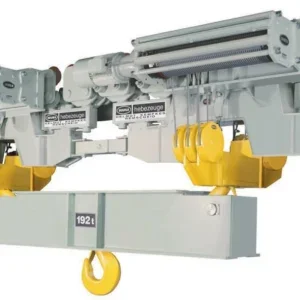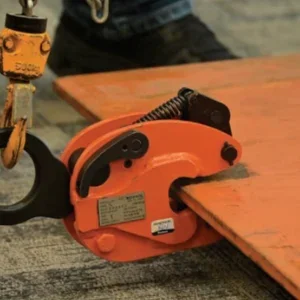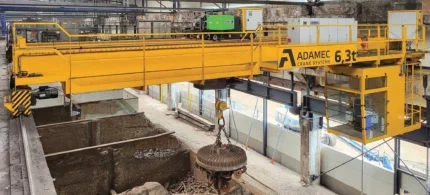
The steel industry was once the pride of industrial Britain. From railways to bridges and skyscrapers, the steel industry formed the backbone of the post-war UK economy, employing thousands. Plants like Scunthorpe and Port Talbot became synonymous with British industrial power.
Today, however, global competition, privatisation and reduced global demand have had a detrimental effect. Today, British steel contributes only a fraction of its historic output to the global market at just 0.3%. “Obviously there’s been a long story of nationalisation and denationalisation to try and fix the problems of the steel industry,” explains Alasdair McDiarmid, general secretary of Community trade union, the main union in the steel industry that represents workers at all six of the major steel producers and downstream companies too. “We’ve now got several companies that all used to be one: so, we’ve got Tata Steel, which is the biggest steel company based in the UK, with its primary steelmaking operations in Port Talbot; British Steel based in Scunthorpe – they were, until recently, the two big integrated steel works that make steel from iron ore. Tata has now closed their blast furnaces.
“Then we have four steel makes that make steel through the electric arc furnace (EAF) route, and they are Celsa Steel [now 7 Steel] based in Cardiff; Liberty Steel based out of their production hub in Rotherham; Marcegaglia Stainless Sheffield, which is a stainless teel producer in Sheffield; and Sheffield Forgemasters, which is now nationalised and makes steel for strategic purposes, [such as] submarines and that kind of thing,” continues McDiarmid.
The potential closure of the UK’s last remaining virgin steel plant, Scunthorpe, in April only emphasised the deep-rooted problems of the industry. Virgin steel – made from raw iron ore in blast furnaces – is a carbon intensive but critical for many heavy-duty applications. Without it, Britain is dependent on imports, making it the only G7 country without a virgin steel industry. “Certainly, in our view, it’s a crucial part which cannot be allowed to close and there’s a number of reasons,” explains McDiarmid.
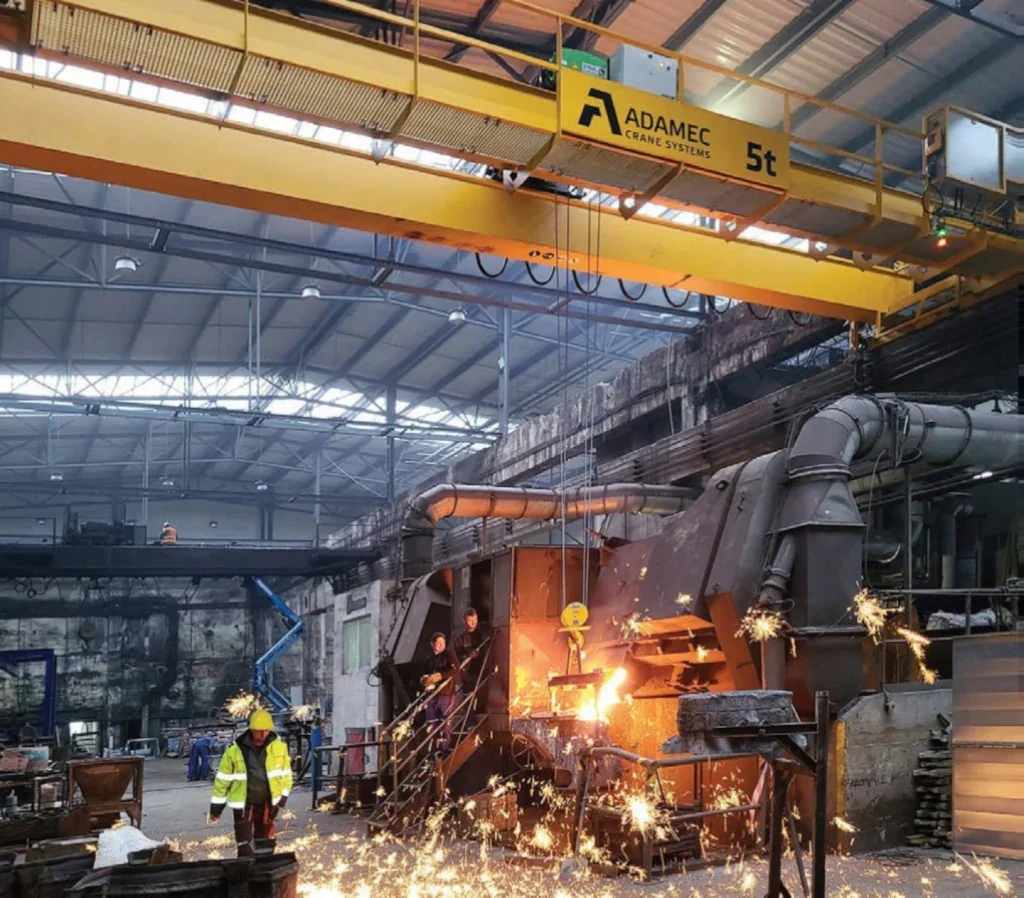
Scunthorpe is a main producer of long products such as beams, rods, girders and everything needed to make bridges, roads, schools, hospitals and rails. “British Steel provides 96% of our rail requirements, so it’s a strategically important business that’s vital for delivery of the government’s infrastructure, investment and growth plans.” If we can’t get its products from Scunthorpe, we would need to import them from somewhere else, explains McDiarmid. “So, either we support jobs here or we support jobs elsewhere, and I think the government came to a similar conclusion.” The closure of the blast furnace would cost around 2,000 jobs, rising to 3,300 direct jobs if the whole plant closes, with greater impact across the supply chain and local community, adds McDiarmid.
Sustainable steel
The state of the British steel industry is worrying to say the least, producing less and importing more. When McDiarmid entered the industry 20 years ago, the UK held around two-thirds of the market share – now that figure is down to 32%.
“We’ve been slowly giving up that market, essentially exporting our hobs over that period of time and now there’s quite a lot of things we can’t make in this country,” says McDiarmid. “We have a hugely valuable market in the UK – it’s a massive advantage for us if things are done right.”
One of the biggest arguments for closing blast furnaces is the carbon-intensive nature of smelting ore. However, shutting down our blast furnaces in an effort to be green isn’t the open and shut case it seems. Without the green infrastructure in place to replace this steel production, Britain would need to import in the meantime. “That looks good for the balance of emissions in the UK, but ultimately they’re not making it through green roots on the whole in China, they’re still building blast furnaces over there,” says McDiarmid. It’s not just that either, he adds, “when you’re shipping the stuff halfway across the world, there’s a big climate penalty to pay for that as well.
“So, it’s bad for the environment, it’s bad for the security of the country, it’s bad for jobs, it’s bad for working and growth, and it’s certainly bad for regions of the country that really needs those industries.”
Moreover, EAF is not a direct substitute for blast furnaces as they use scrap to make steel instead of raw iron. High-quality steel still needs virgin steel to go into the mix alongside the scrap. The greener alternative, direct reduced iron (DRI), is rare and largely produced in Russia. Without investment in both EAFs and domestic production of DRI, Britain is be left “at the mercy of international supply chain in a very uncertain world”.
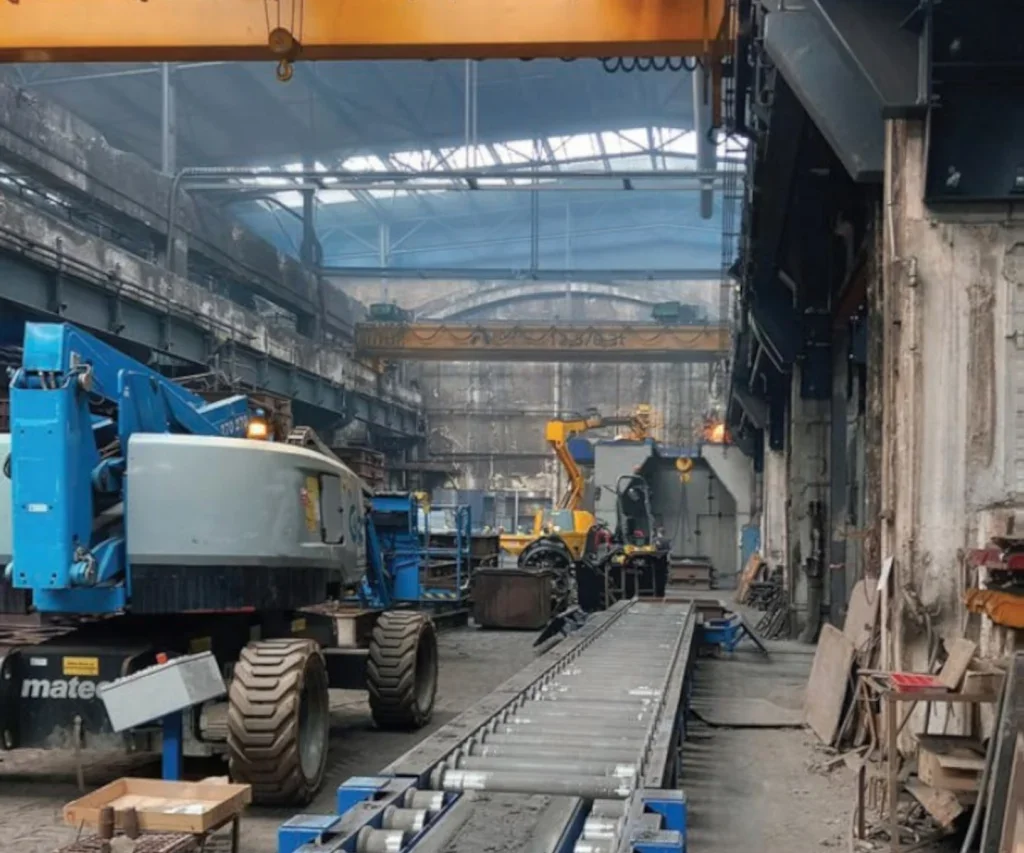
British steel makers are also squeezed by international competitors, particularly in China and India, where steel production is cheaper thanks to lower labour and energy costs. “We do have massive problems with global oversupply and particularly the role of China, which now makes half of the world’s steel,” adds McDiarmid. “What happens is their economy slows down a little bit, then suddenly there are hundreds of millions of tonnes more than the whole capacity of Europe just flooding the market – that’s a major problem.” This already happens to a certain extent, he explains, and without protections in place it will make it harder for British steel to compete. The safeguards currently in place are due to expire in June 2026, which is a major concern, and trade wars and tariffs add further instability.
“The steel sector is a cornerstone of our operations at STAHL CraneSystems UK,” says Rob Wood, sales and marketing manager at Columbus McKinnon Corporation, which acquired STAHL CraneSystems UK in 2017. “Our hoisting and crane technology is widely used in steel production facilities for handling raw materials, semi-finished products and heavy components.
“Volatility in steel production can lead to fluctuating demand for our equipment and services,” he explains. “However, we mitigate this through agile supply chain management and close collaboration with our partners. Our modular product design also allows us to adapt quickly to changing requirements, ensuring continuity in service delivery even during periods of market disruption.”
Energy prices are another a major hurdle for the UK steel industry. “We have very uncompetitive energy prices in the UK – we pay about 50% more than they do in France and the Germany,” explains McDiarmid. This has been a huge issue for the UK in recent years, particularly in terms of attracting investment. Decarbonisation through DRI or EAF requires a lot more energy than currently used in blast furnaces to make steel. “When you’re trying to justify hundreds of millions of pounds worth of investment and we’ve got the highest energy price anywhere in the West, then that’s a really difficult justification for companies to make.”
The UK lacks a competitive policy framework for steel, stresses McDiarmid. “We have a real chance of resetting the steel industry, which has been under invested for such a long time,” he says. Market protections and support for green investment are needed to regrow and rebuild the industry, but only if something is done about energy prices.
Clean as a whistle
In response to the unfolding crisis, the UK government passed the Steel Industry (Special Measures) Act, aimed at stabilising the sector. The act allows for temporary nationalisation of at-risk plants – such as Scunthorpe, the motivator for this act – emergency funding for decarbonisation projects and incentives for domestic steel procurement in public infrastructure projects.
While many in the industry have welcomed the move, some have argued that it’s a stopgap. “It was great to see the legislation go through with no dissent from any political party – there was a real consensus, everyone had a slightly different take on it, but everyone agree that it was important to intervene at that stage,” says McDiarmid
He credits the situation to the shift to global trends: “We’ve been making the case for many years that steel is a strategically important industry.” But, as a result of many of Trump’s policies, countries are looking after themselves. “This idea that we can’t let these industries go has a lot of political consensuses, so it was good to see that’s a real change in recent months.
“It is a long overdue intervention, but I think it was an emergency intervention that had to happen.” The owners of Scunthorpe, Jingye, “were going to close things down, [and] they were starving the furnaces of raw materials.” This would have forced a closure and led to reliance on imports from the Chinese, which wasn’t an acceptable option for the government or industry.
However, despite this, McDiarmid believes this is only temporary. “It’s not been nationalised yet, but even if it is, we expect that it’s going to have to return to the private sector or at the very least have a major private investment coming in to partner with the government.” The next phase for Scunthorpe is decarbonising the site, an expensive process that is likely to cost billions and likely necessitating private investment. “That’s the really important next stage. It’s not a long-term solution but we believe it’s a necessary solution to finding a longer-term sustainable position,” adds McDiarmid.
To achieve the next step of decarbonisation, however, is not without its own challenges. It’s not something that has done well in this country, admits McDiarmid. Decarbonisation tends to reduce jobs, especially in the labourintensive blast furnaces.
“Our most recent experience is the decarbonisation of Port Talbot,” explains McDiarmid. The initial plan was to avoid compulsory redundancies and transition over a decade, closing one blast furnace and building an EAF, and closing the other in the 2030s to be replaced with an EAF at that time. “That was not the approach which the government ultimately agreed with the company, which was ‘no, we’re just going to shut the furnaces immediately. We’re going to import Indian steel over a transition period and build the EAFs as quickly as we can.’ That’s been very, very damaging [and] led to impacts on employment that were really difficult to manage.”
In Europe, its decarbonisation targets are set for 2050, so there is a lot of anger around the early net zero goals in the UK. “It is really important to get these transitions right and try to bring people along. If you force these transitions on workforces and communities, and against the wishes and advice of representatives of the workforce like ourselves, then there’s a big problem.”
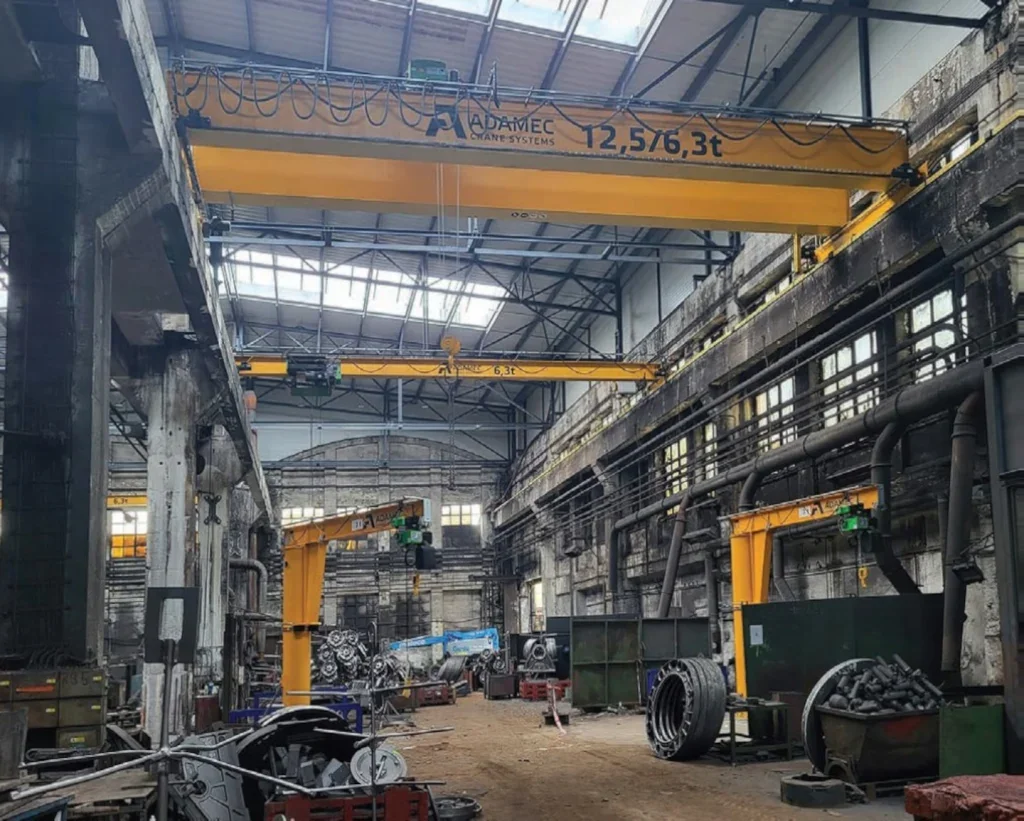
What would a truly sustainable, competitive and worker-focused British steel industry look like? McDiarmid is clear: a competitive policy environment. “And until we have competitive energy prices and a business rates regime which doesn’t penalise investment and a trade defence regime which is a robust as other countries, then it’s going to be really difficult for us.”
The British steel industry has the potential to be world leading and despite the country’s 32% market share, “there really is something to go for”, says McDiarmid. But getting it right is the most important part.
For STAHL, “We’d welcome targeted support for infrastructure modernisation, including grants or incentives for upgrading lifting and handling systems in steel plants. Clear policy direction on the future of UK steel, especially in the context of decarbonisation, would also help businesses like ours plan with confidence,” explains Wood. “Finally, investment in skills development and apprenticeships is essential to ensure a pipeline of talent for both the steel and hoist sectors.”
Forging ahead or fading away?
The hoist and lifting sector rely on high-quality domestic steel and British steel has long been a trusted resource for hoist frames, gantries and load-bearing systems. “The sector’s demand for robust, reliable and precise lifting solutions aligns perfectly with our engineering strengths. As such, developments in the steel industry directly influence our project pipeline, innovation focus and long-term planning,” explains Wood.
The declining domestic steel production forces hoist manufacturers to face increasing challenges sourcing consistent, high-quality material that meets both safety and performance standards. The uncertainty of the Scunthorpe plant is one example where many in the hoist industry were forced to rethink their strategy and consider alternatives.
“The uncertainty surrounding the Scunthorpe plant has prompted us to reassess our regional engagement strategy,” agrees Wood. “While we haven’t seen an immediate downturn in orders, the potential closure underscores the need for diversification and resilience in our customer base. We’re also increasing our focus on supporting downstream steel users and exploring opportunities in adjacent sectors like recycling and green steel initiatives.”
If the UK is to lead in sustainable construction and industrial safety, and meet its green targets, it must ensure that hoist manufacturers have access to low-carbon, high-strength steel locally. The green transition within the steel and hoist industries is reshaping priorities across all levels of the manufacturing, supply chain and policy. “Sustainability is a key driver of innovation at STAHL CraneSystems UK…Our solutions are increasingly aligned with the needs of green steel producers and circular economy initiatives,” confirms Wood. “[STAHL is] proactively diversifying our market focus to include sectors such as renewable energy, infrastructure and advanced manufacturing.” One way STAHL is supporting its customers’ decarbonisation goals if by offering life cycle services to extend equipment longevity and reduce waste.
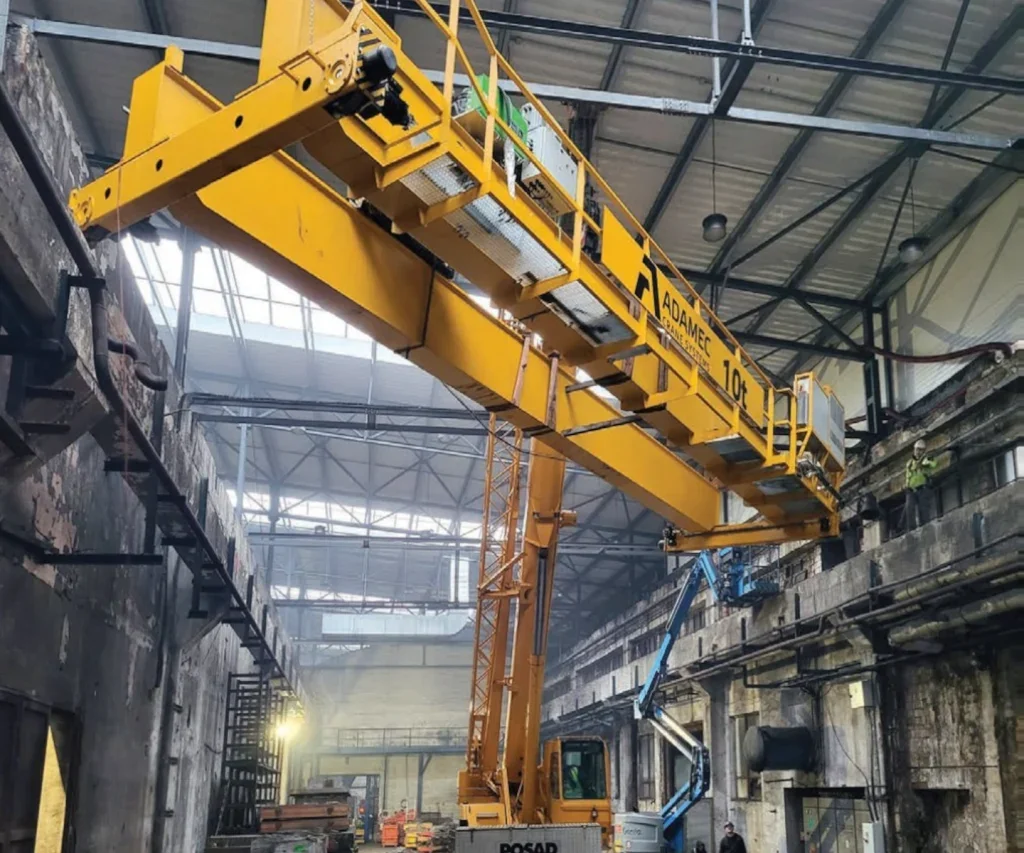
Without a revitalised steel sector, the hoist industry – particularly SMEs – may struggle to stay afloat. Therefore, healthy, long-term partnerships between the hoist and steel sectors built on reliability, shared innovation and sustainability is essential. Both industries would benefit from collaboration on green technology, material standards and workforce development. “By working closely together, the steel and hoist sectors can co-create solutions that enhance productivity and environmental performance across the value chain.
“We’ve recently supported several UK-based steel facilities with tailored hoisting solutions, including high-capacity wire rope hoists and explosion-protected crane systems,” adds Wood as a recent example of collaboration between STAHL and the steel industry. “One notable project involved upgrading the material handling systems at a major steel processing plant in the Midlands, where we delivered a turnkey solution that improved both safety and throughput. These partnerships are built on long-term trust and a shared commitment to operational excellence.”
Despite the challenges with the industry, there is cautious optimism about the future of British steel. To achieve this, however, industry stakeholders are calling for longterm investment in green steel technology, strengthened procurement policies favouring UK-produced steel, continued government support beyond emergency legislation like the Special Measures act and greater collaboration between the industry and government on innovation.
If these challenges are met head on, the British steel industry may yet forge a new identity, one that is leaner, greener and more resilient. “Hopefully, it’ll be a brighter future going forward than we’ve seen over the last 20 odd years,” says McDiarmid. For now, the industry stands at a crossroads. The decisions made in the coming months and years will determine whether British Steel fades away or forges ahead.



